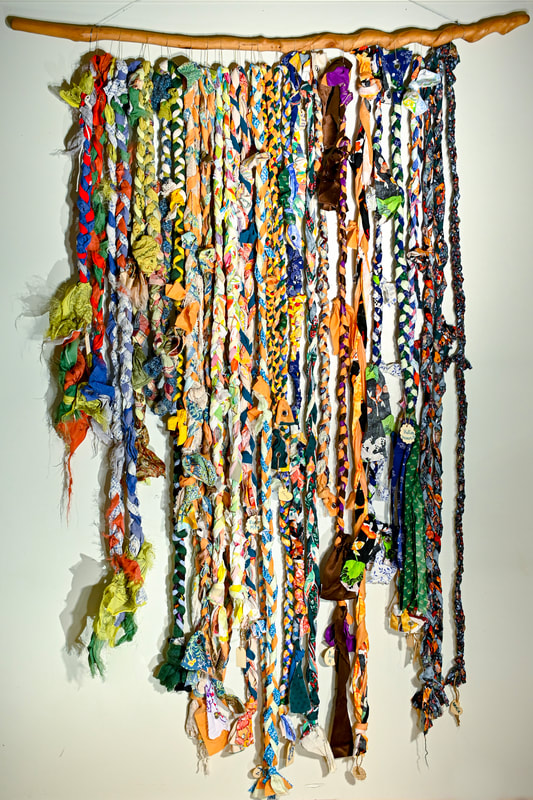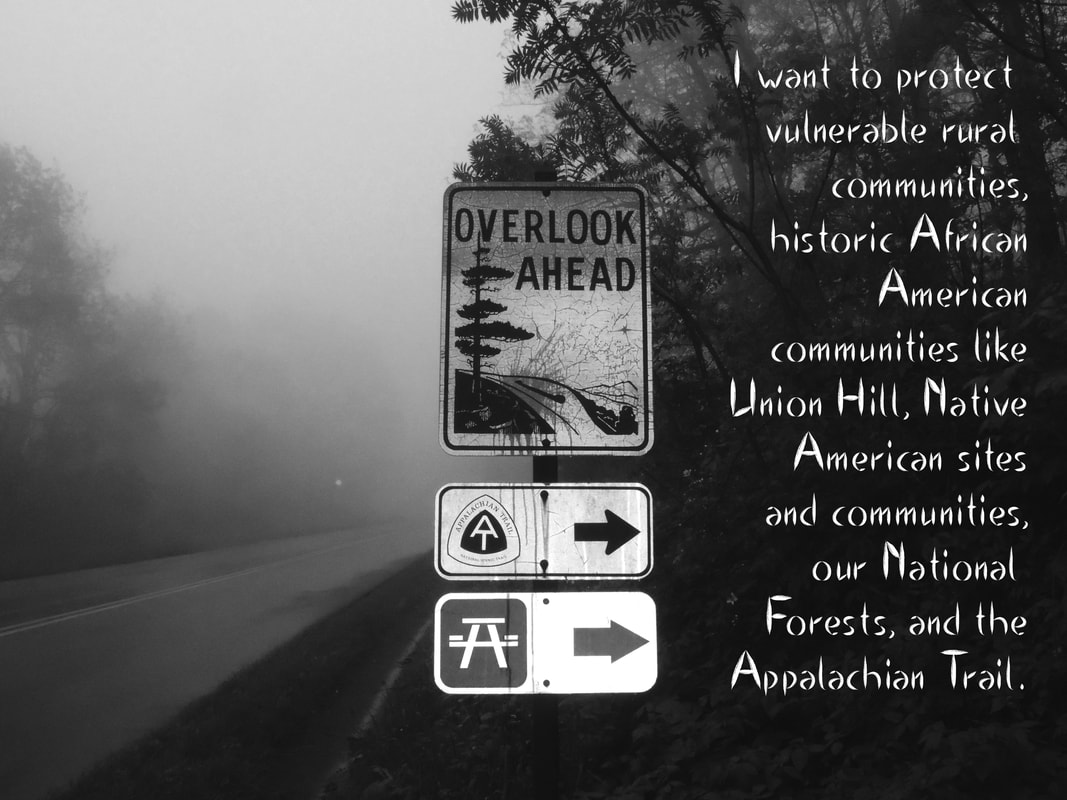|
"Won't You Be Min(e)dful" & poem "Entwined" at the Close to Home Environmental Art Show at High Tor Gear Exchange in Charlottesville April 1 to April 29, 2022
I'm so happy this piece (at left) is part of part of the show, since High Tor is one of my favorite shops in Cville. Stop in for great used gear for your outdoor pursuits and check out the rest of the art - lovely line drawings and paintings too! The Ties That Bind Multimedia Exhibit -- Through Sept 23, '21 Rockfish Valley Community Center, Nelson County, 4-6 PM. A WILDly successful show with 12 fabric hangings sold to benefit Wild Virginia's #NoMVP efforts. Still available: 6 vibrant fabric art pieces and several spectacular photos remaining for sale (see Gallery). Stay tuned for news of one or more shows this spring (2022). A #NoPipelines Collaborative Community Art and Story Project
|
Braiding in Culture and History
In African American culture, hair braiding has a special place, and some participants in this project have drawn on their experiences to make special braids (a wall hanging using the fishtail method, for example). Here is an article about the role of braiding and the issues around appropriation: From Essence Magazine: Respect Our Roots: A Brief History of Our Braids This article explores braiding in many cultures from around the world and in earlier centuries: The Wild, Amazing True History of Braids |
Also: Check out this podcast about The Ties That Bind on "Home Grown: Your Show About Local Art" that aired on 94.7 in Charlottesville and is now available on the Cville podcast network. | ||||||
Instructions
Get your group or community together (or do it yourself with a buddy). It is helpful for one person to hold the knot end while one person braids (or use clamps) & braid, knot, & twist your fabrics together, following the basic instructions below. You can sew decorative items onto your strand if you like. Eventually we will link all these strands together to form a protective weaving that can be used in different #NoACP (or #NoMVP) protests, gatherings, & art exhibits . Note that a VERY IMPORTANT part of the project is completing the Story Form (download at the icon above) to say why you picked the fabrics and your ties to the #NoPipelines protest movement, and sending that description, along with the braids, to Amelia.
- Download the My Ties That Bind Story form (above).
- Gather lengths of fabric, ideally 4 to 5 feet, but short pieces from old shirts etc. tied together work fine too, at least 3 pieces to braid.
- Braid, twist, add knots, sew on special objects (bells, beads, a pocket to hold your message), write on your braid if you like. Watch the video about how to make the braids.
- Use fabric that comes from your life, that has a story, or that is linked to your pipeline resistance. Here are some examples:
- I love winter on the farm and this old scarf has seen me through some cold ones. May it help protect our land from the pipeline.
- I live in a city so the pipeline won’t be in my backyard, but I have learned how pipelines leak methane and make climate change worse, so I have brought 3 different green fabrics to show my care for the earth.
- I love hiking in the National Forest and brought some old jeans and t-shirts I used to wear hiking.
- My fabric is my son’s old childhood twin bed set. The compressor station could affect childrens’ health and increase rates of asthma so I want to protect the children.
- Perhaps you will choose something you had put away in the attic -– grandpa’s old ties or a christening gown. I used my mother’s wool scarf!
- Use a shirt pocket and add your story or message. Cut so that you will braid the arms of the long-sleeved shirt into your braid and let the pocket hang down. Or write on your fabric, or tuck ribbons with your words through the braid so they hang down like a fringe!
- You can add knots if you like. When you are finished, leave room to tie a knot at the end and leave some fabric dangling - we will put grommets (also called eyelets) in these ends so the braids can all be joined together. Individual braids will then be braided and twisted together to make a "rope" about 12" in diameter. We need a LOT of braids.
- When you are done, contact the artist and she will arrange to pick up your strands(s) and Story Forms.
- Other ideas for fabrics:
- A worn out flannel shirt
- Jeans that someone has outgrown
- A tablecloth with a stain – cut around it!
- An old baby blanket
Decorative knots
Finish off a braid with a 3-strand Matthew Walker knot. I think this is the best video - makes it seem easy. But this alternative video is good too!
Add a wall knot to finish, or for decoration in the middle:
Wall knot how-to
Join 2 braids or strands with a “bend” (the name of knots that join two ropes or strands):
Carrick Bend – is good for heavy ropes. Here's a good video too.
A Zeppelin bend (also Rosendahl bend) is a general-purpose bend knot. It is a secure, easily tied, and jam-resistant. Other bends can be simple and secure but this one is also easily untied.
Copyright © 2015



